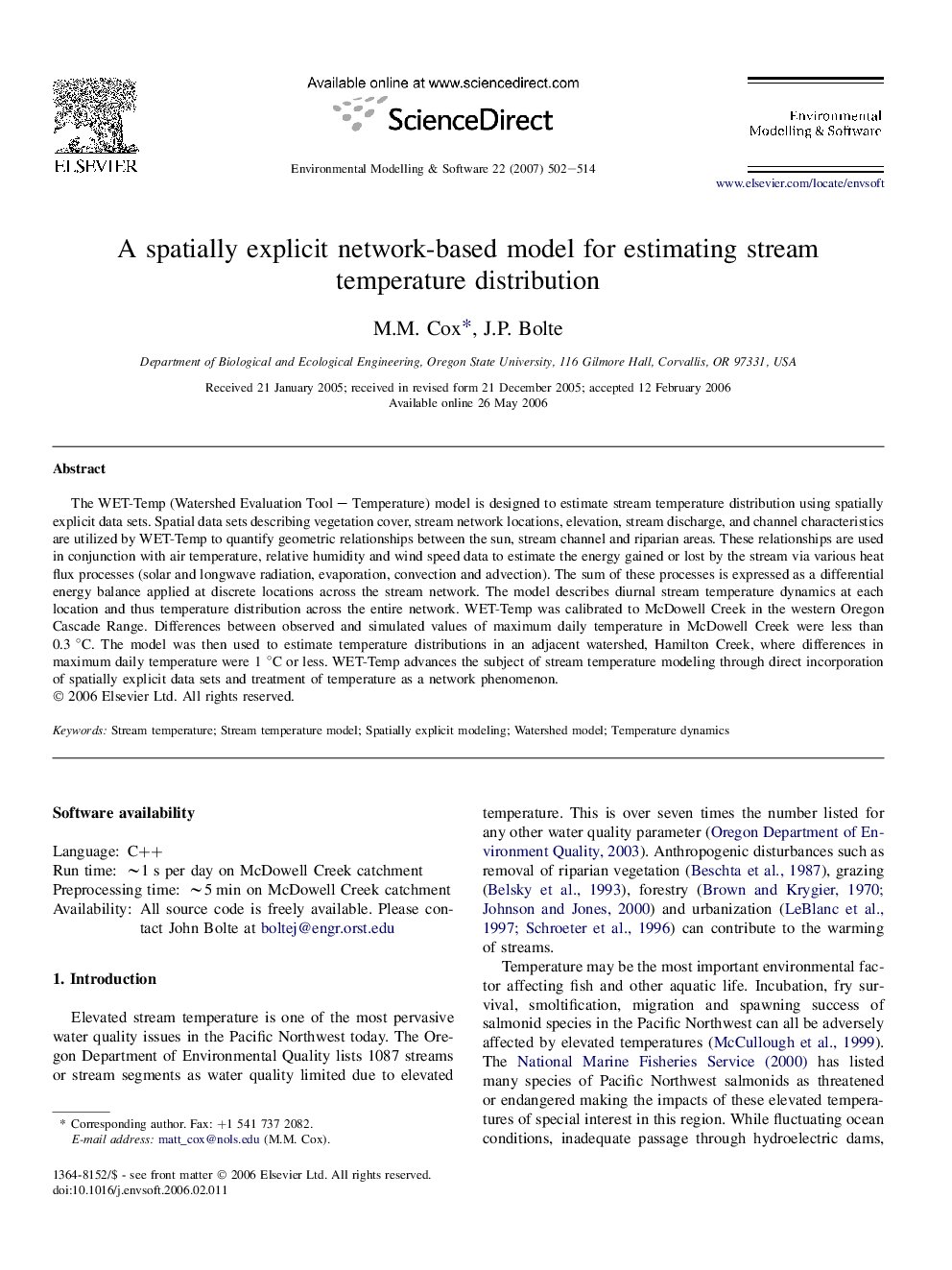| Article ID | Journal | Published Year | Pages | File Type |
|---|---|---|---|---|
| 569141 | Environmental Modelling & Software | 2007 | 13 Pages |
The WET-Temp (Watershed Evaluation Tool – Temperature) model is designed to estimate stream temperature distribution using spatially explicit data sets. Spatial data sets describing vegetation cover, stream network locations, elevation, stream discharge, and channel characteristics are utilized by WET-Temp to quantify geometric relationships between the sun, stream channel and riparian areas. These relationships are used in conjunction with air temperature, relative humidity and wind speed data to estimate the energy gained or lost by the stream via various heat flux processes (solar and longwave radiation, evaporation, convection and advection). The sum of these processes is expressed as a differential energy balance applied at discrete locations across the stream network. The model describes diurnal stream temperature dynamics at each location and thus temperature distribution across the entire network. WET-Temp was calibrated to McDowell Creek in the western Oregon Cascade Range. Differences between observed and simulated values of maximum daily temperature in McDowell Creek were less than 0.3 °C. The model was then used to estimate temperature distributions in an adjacent watershed, Hamilton Creek, where differences in maximum daily temperature were 1 °C or less. WET-Temp advances the subject of stream temperature modeling through direct incorporation of spatially explicit data sets and treatment of temperature as a network phenomenon.
